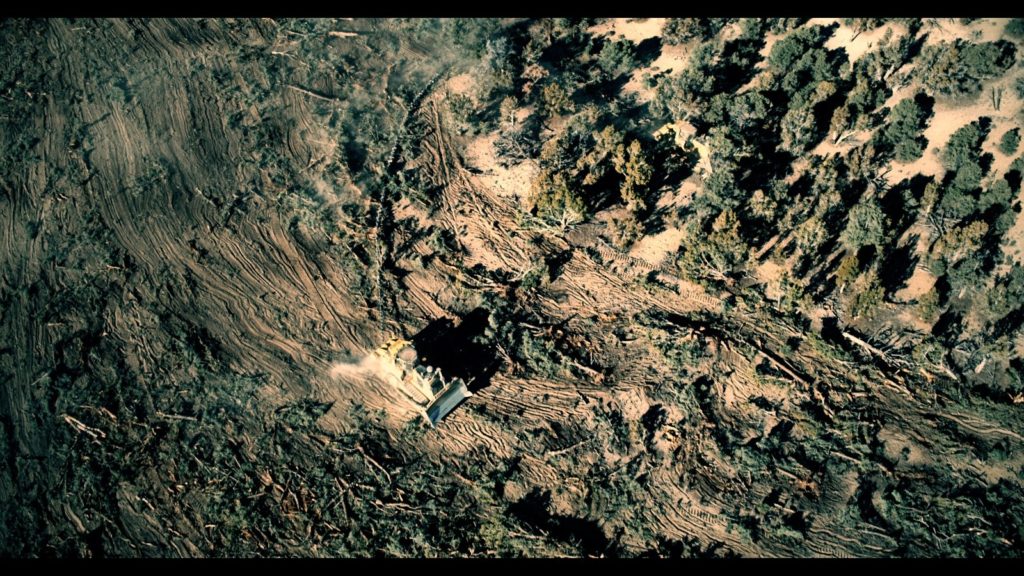Every year the Utah Bureau of Land Management (BLM) spends millions of taxpayer dollars destroying thousands of acres of native pinyon pine and juniper forests and sagebrush stands. While the projects devastating these lands are mostly done in the name of “habitat restoration,” there is little evidence that supports the BLM’s assertion that these projects improve landscapes for anything other than cattle grazing.
Recently, we’ve seen a significant uptick in both the agency’s eagerness to conduct vegetation removal activities and in the funding available for them. Projects continue to grow in size and scope.
What is a Vegetation Removal Project?
Vegetation removal projects take many forms.
At the most basic level, individuals go out on foot with chainsaws, toppling pinyon pine and juniper trees before scattering sawed-up pieces around the site.
Moving beyond these “hand thinning” projects, the BLM uses a number of different methods to accomplish its ultimate goal: removing large swaths of vegetation. Some projects use herbicides to kill sagebrush and pinyon and juniper saplings. Others use prescribed fire to burn down trees.
More commonly, the BLM resorts to heavy machinery to accomplish similar ends. Some, called “bull hogs,” mow down trees with giant mulchers attached to front end loaders or excavators. These machines turn living trees into piles of wood chips and stumps, attacking one tree at a time until whole stands are gone. Another method used by the BLM to remove vegetation is called the Dixie harrow method, which consists of dragging a 25- to 50-foot wide frame with large teeth welded to parallel bars behind a tractor, churning soil and uprooting vegetation.
“Chaining,” the most environmentally destructive option, uses a large anchor chain dragged between two enormous bulldozers to tear trees out of the ground, roots and all. The bulldozers used for these chainings travel back and forth as the chains, which can weigh more than 20,000 pounds, flatten hundreds of trees with every pass. As this occurs, the chains rake across the surface, destroying soils, sagebrush, grasses, and forbs and leaving discarded trees in their wake, which can litter the landscape for decades.
Destroying Wilderness
Vegetation removal projects using heavy machinery are not compatible with wilderness. When chains, harrows, or industrial mulching equipment are used to kill off essentially every tree and bush in a wilderness-quality area, the screening, solitude, and naturalness of that area can go from outstanding to nonexistent. Although the BLM claims that these vegetation removal projects will not ruin wilderness characteristics, the evidence of past projects is used by the BLM to justify determinations that areas do not qualify as wilderness.
In addition to degrading wilderness values, these projects disrupt fragile ecosystems, destroy cultural sites, and interrupt the visual aesthetic of an area. It is no secret that invasive species such as cheatgrass thrive in disturbed soils, and vegetation removal projects using heavy machinery create significant disturbance to soils and fragile biological soil crusts, providing the perfect opportunity for invasive species to take root. This issue is compounded when the project area is not seeded with native vegetation (BLM often re-seeds an area with non-native “forage species”), is only rested from livestock grazing for a season or two (if it actually happens at all), or experiences severe drought—which is unfortunately the new normal for the desert southwest.

The BLM’s Shifting Rationale for Vegetation Removal Projects
After the BLM realized some years ago that they could not outright say that these projects were strictly to increase forage for sheep and cattle, they now claim many other benefits. Most proposed pinyon and juniper removal projects take the blanket approach that ridding the area of existing vegetation is the only way to accomplish a variety of stated project goals, usually including:
- restoring sage-grouse habitat by modifying “decadent” sagebrush stands,
- fire prevention,
- improving habitat for mule deer and elk,
- protecting watersheds and improving water quality, and
- removing “encroaching” or “invasive” pinyon and juniper trees.
Most of these benefits lack scientific support, but by throwing out so many possible rationales, the agency gives itself a variety of justifications to hide behind. This makes the projects harder to challenge and more likely to be approved and funded.
The Public is Paying Millions of Dollars for this Destruction
The harm to wilderness-quality landscapes and fragile ecosystems is bad enough on its own, but the fact that millions of taxpayer dollars are being funneled into these projects makes them all the worse. Cash strapped federal agencies are seeing dollar signs for projects labeled “habitat restoration,” which, in turn, has led to a “bigger projects equal bigger funding” mentality. As an example, one project in Hamlin Valley recently received $1,717,829.22 to remove pinyon pine and juniper trees from a little over 4,800 acres using the chaining and bull hog methods. This represents an enormous cost to the public for an extremely destructive activity with few, if any, proven benefits.

Project Outcomes
In conducting these projects, the BLM usually fails in both its obligation to use the best available science and in its duty to the public to conduct extensive monitoring when undertaking large-scale habitat manipulation. Furthermore, the agency almost universally refuses to try less-invasive management methods—such as closing an area from livestock grazing or setting up scientifically-sound test plots to determine the most effective means to accomplish their goals—and instead follows the money towards extreme, large-scale manipulation projects.
What’s left after these projects are significantly altered public lands and almost complete uncertainty over whether the projects will accomplish any of their stated goals—with no monitoring or scientific study of completed projects before moving on to the next destructive landscape manipulation, regardless of past success or failure. After more than sixty years of these projects, the BLM needs to show these projects are more beneficial than harmful before pushing forward, destroying landscapes, and spending millions of taxpayer dollars.

